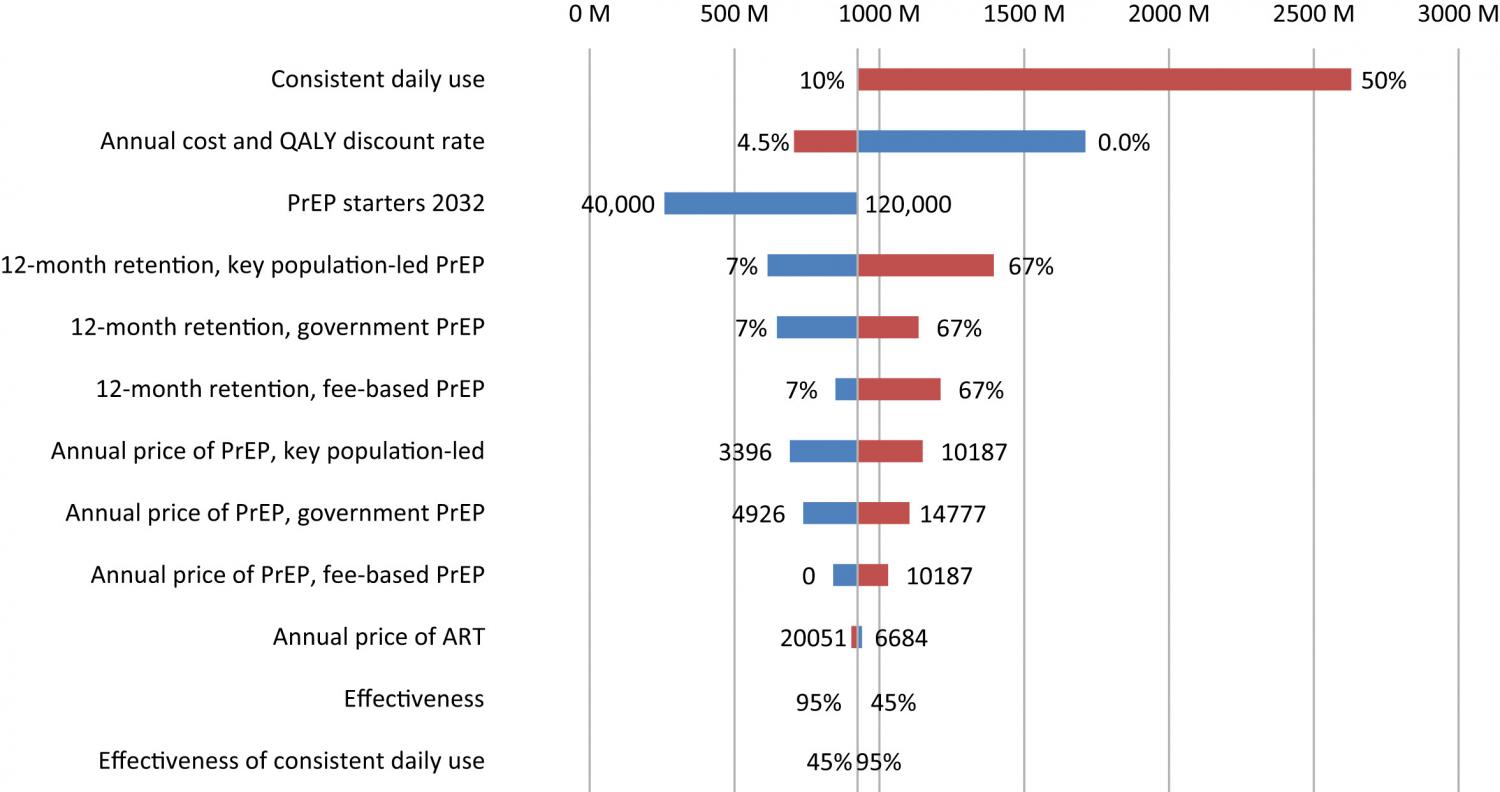
Background: Although key populations (KPs), such as men-who-have-sex-with-men (MSM) are disproportionately affected by HIV, many prevention and treatment services are not easily accessible for KP members. To address the needs of KPs, Thailand established pre-exposure prophylaxis (PrEP) service delivery together with and led by KP members. This study determines the epidemiological impact and cost-effectiveness of key population-led (KP-led) PrEP. Methods: We calibrated a compartmental deterministic HIV transmission model to the HIV epidemic among Thai MSM. Besides KP-led PrEP, we included other Thai service delivery models of PrEP (fee-based PrEP, the government PrEP program).Data on consistent PrEP use (5 years daily use, 95% effectiveness for preventing HIV) came from Thai PrEP delivery models. For the period 2015–2032, we ranged the number of PrEP starters (40,000–120,000), effectiveness of PrEP (45%–95%), and proportion of consistent users (10%–50%). The analysis started in 2015 when PrEP was introduced. A cost-effectiveness ratio of <160,000 Baht per quality-adjusted life year (QALY) over 40 years was cost-effective. Findings: Without PrEP, 53,800 (interquartile range 48,700–59,700) new HIV infections are expected in 2015–2032. KP-led PrEP was found to have the strongest epidemiological impact of all delivery models averting 58% of infections compared to without PrEP. The epidemiological impact depends on the number of PrEP starters and proportion of consistent use. Although all PrEP service delivery models are cost-effective, KP-led PrEP is most cost-effective with incremental cost-effectiveness ratios of 28,000–37,300 Thai Baht per QALY. Interpretation: Our model projects KP-led PrEP having the greatest epidemiological impact and being the most cost-effective service delivery model of PrEP in Thailand. Funding: This study was supported by the US Agency for International Development and U.S. President's Emergency Plan for AIDS Relief through the Linkages Across the Continuum of HIV Services for Key Populations cooperative agreement (AID-OAA-A-14- 0045) managed by FHI 360.
